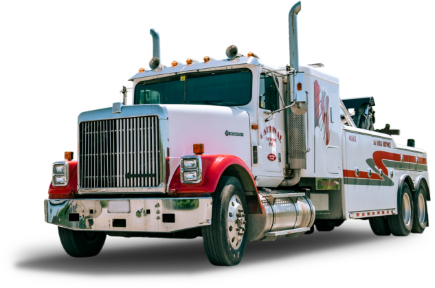We’ve all been there – cruising down the highway, enjoying a long road trip or just commuting to work when suddenly, the dreaded oil light on the dashboard flickers to life. It’s a nerve-wracking moment that no driver wants to experience, as it signals a potential problem with your engine’s lubrication system.
In this article, we will discuss what to do if you run out of engine oil while driving, including the signs of low engine oil, immediate steps when the oil light comes on, safely adding oil to your vehicle, checking for oil leaks or damage, and preventative maintenance to keep your engine’s oil health in check.
Signs of Low Engine Oil
Before we delve into what to do if you run out of engine oil, it’s crucial to recognize the signs of low engine oil to prevent reaching that critical point.
Ignoring these signs can lead to severe engine damage, so here are some common indicators that your engine oil might be running low:
Dashboard Warning Light: The most obvious sign is the oil pressure or low oil level warning light on your dashboard. If this light illuminates, it’s a clear indication that your engine is not receiving adequate lubrication.
Engine Noise: When your engine lacks sufficient oil, you may hear unusual knocking or ticking sounds. This noise occurs as the engine’s moving parts rub against each other without proper lubrication.
Decreased Performance: A low oil level can lead to decreased engine performance and reduced power, as the engine struggles to function efficiently.
Overheating: Insufficient oil can also cause your engine to overheat, leading to potential engine damage or even a breakdown.
Poor Fuel Efficiency: If your vehicle’s oil level is critically low, it may also affect fuel efficiency, as the engine has to work harder to compensate for the lack of lubrication.
Immediate Steps When the Oil Light Comes On
If you notice the oil light on your dashboard, here’s what you should do immediately to prevent further damage to your engine:
Pull Over Safely: As soon as the oil light comes on, find a safe spot to pull over to the side of the road. Do not continue driving, as it can lead to severe engine damage.
Turn Off the Engine: Once you’ve pulled over safely, turn off your engine to prevent any further damage. Let the vehicle cool down for a few minutes.
Check the Oil Level: Open the hood and check the oil level using the dipstick. If it’s dangerously low or completely empty, you’ll need to add oil.
Safely Adding Oil to Your Vehicle
If you’ve determined that your engine oil is critically low, follow these steps to safely add oil to your vehicle:
Locate the Oil Filler Cap: Open the hood and locate the oil filler cap. It’s usually labeled “oil” and may have an oil can symbol.
Choose the Right Oil: Consult your vehicle’s owner’s manual to determine the correct type and viscosity of oil for your engine. Using the wrong oil can lead to problems.
Add Oil Gradually: Slowly pour a small amount of oil into the filler hole. Wait a minute or two for the oil to settle, then check the dipstick again to ensure you don’t overfill it.
Recheck the Oil Level: Continue adding oil gradually and checking the dipstick until it reaches the recommended level. Do not overfill, as this can also cause issues.
Close the Hood and Restart: Once you’ve added enough oil, securely close the oil filler cap and restart the engine. Check for any warning lights on the dashboard, and if the oil light is off, you can proceed with caution.
Checking for Oil Leaks or Damage
After adding oil and restarting the engine, it’s essential to check for any oil leaks or potential damage to your vehicle. Here’s how to do it:
Inspect the Ground: Look beneath your vehicle for any fresh oil spots. If you see a significant oil puddle, there may be a leak that requires immediate attention.
Examine the Engine: Carefully inspect the engine for signs of oil leaks or damaged components, such as loose or disconnected hoses, gaskets, or oil pan damage.
Listen for Strange Noises: While the engine is running, listen for any unusual noises that might indicate ongoing issues, such as knocking or grinding sounds.
Preventative Maintenance for Oil Health
To avoid the stress and potential damage caused by running out of engine oil, it’s crucial to perform regular preventative maintenance to keep your engine’s oil health in check.
Here are some essential tips:
Regular Oil Changes: Follow the manufacturer’s recommended oil change intervals and use high-quality oil and filters.
Check Oil Levels: Routinely check your vehicle’s oil level using the dipstick to ensure it’s within the recommended range.
Fix Oil Leaks Promptly: If you notice any oil leaks, have them repaired as soon as possible to prevent further oil loss.
Monitor Engine Performance: Pay attention to your vehicle’s performance, and if you notice any unusual noises, decreased power, or increased fuel consumption, have your vehicle inspected by a mechanic.
Maintain Proper Engine Temperature: Overheating can cause oil to break down, so ensure your engine’s cooling system is in good working condition.
Conclusion
Running out of engine oil while driving can be a stressful and potentially damaging experience.
To avoid this situation, it’s crucial to recognize the signs of low engine oil and take immediate action when the oil light comes on.
Safely adding oil to your vehicle, checking for oil leaks or damage, and performing regular preventative maintenance are all essential steps to ensure your engine’s health and prevent costly repairs.
Remember, proper care of your vehicle’s engine oil is key to a smooth and trouble-free driving experience.



